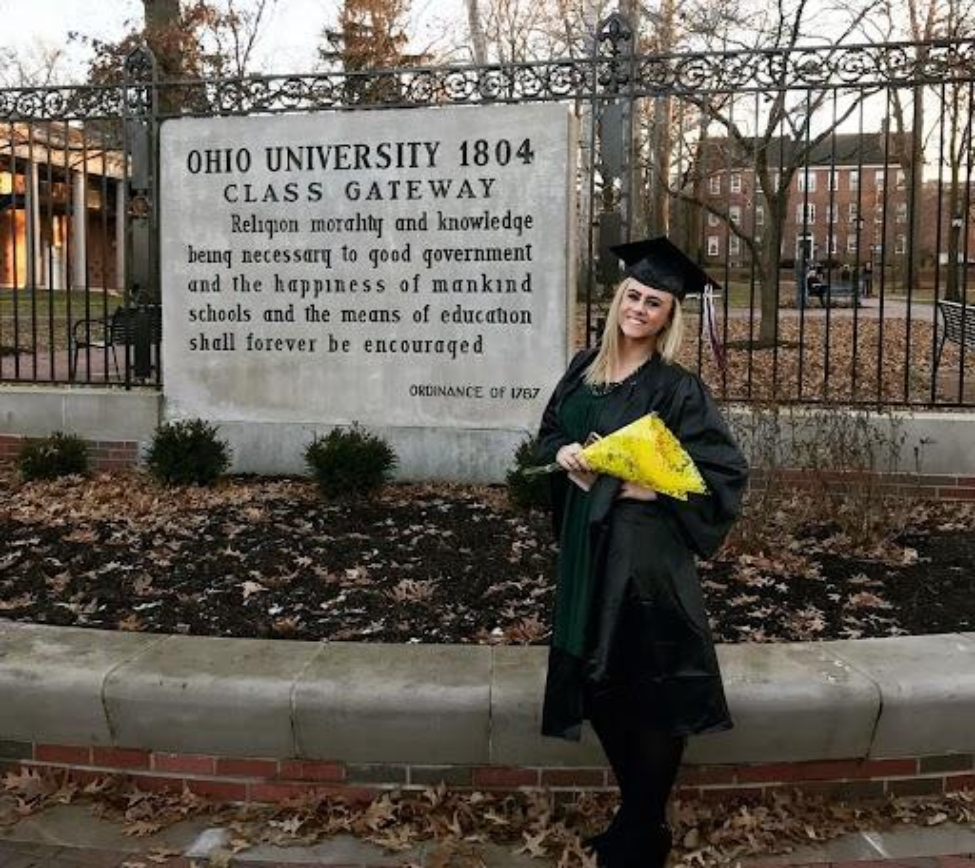At the Bedside: Young woman with drug-resistant epilepsy gets new lease on life after transformative brain surgery



At just 9 years old, Lindsay Snyder was diagnosed with epilepsy in 2003. As she progressed through school, what Lindsay initially thought were “staring spells” in class turned out to be daytime seizures, and her nighttime seizures were even worse.
Because her dad’s job required the family to move regularly, Lindsay saw a different neurologist every few years. She was placed on several different medications, but nothing worked. When Lindsay was living in Florida at 18 years old, the daily episodes caused her to miss so much school that she almost didn’t graduate from high school. Her neurologist there brought up the possibility of brain surgery, and Lindsay kept the option in the back of her mind.
Against the odds, Lindsay graduated, and her family moved to Texas shortly afterward. She enrolled in college, but the frequent daytime seizures caused Lindsay to lose control, drop to the ground, and foam at the mouth, often during class. She couldn’t drive, and cameras were set up in her bedroom in case she seized overnight. Eventually, she failed too many courses and had to withdraw.
“At that point, I told my mom and dad, ‘I want to look more into brain surgery. I feel like I don’t have a life, and I want a life,’” Lindsay said.
She was ultimately referred to Nitin Tandon, MD, professor and the Nancy, Clive and Pierce Runnells Distinguished Chair in Neuroscience of the Vivian L. Smith Center for Neurologic Research with McGovern Medical School at UTHealth Houston. Tandon is also the vice president of strategy and development at UTHealth Houston Neurosciences, the BCMS Distinguished Professor in Neurological Disorders and Neurosurgery at McGovern Medical School, a faculty member at MD Anderson Cancer Center UTHealth Houston Graduate School of Biomedical Sciences, and a neurosurgeon with Memorial Hermann-Texas Medical Center.
He recommended stereoelectroencephalography (SEEG), a minimally invasive surgical procedure that uses electrodes to identify deep areas in the brain where drug-resistant epileptic seizures begin.
In August 2013, the 19-year-old Lindsay underwent the SEEG, and Tandon discovered her seizures were being caused by a cortical dysplasia, which occurs when the top layer of the brain does not form properly. Later that month, Tandon performed surgery in an effort to remove the source of the seizures.
Lindsay has been seizure-free ever since, allowing her to move forward with her life over the past decade. Shortly after the surgery, she was accepted into Ohio University. After graduating, she moved to Florida, where she enrolled in graduate school and has since pursued a career in behavioral sciences. Today, she lives in Nashville with her fiance and works as a behavioral specialist for a local school system.
“It’s so overwhelming to look back to where I was 10 years ago — crying all the time, angry, constantly being watched, trying different meds with different reactions, missing school, and getting black eyes and minor fractures from falling so hard. Now, I don’t even know who that person is,” Lindsay said. “I never would have imagined my life being where it’s at right now — owning a home, getting married, and happily settled into a career. This surgery created a new life for me.”
At the Bedside is a series of patient stories with UTHealth Houston physicians and staff.
Media Inquiries: 713-500-3030